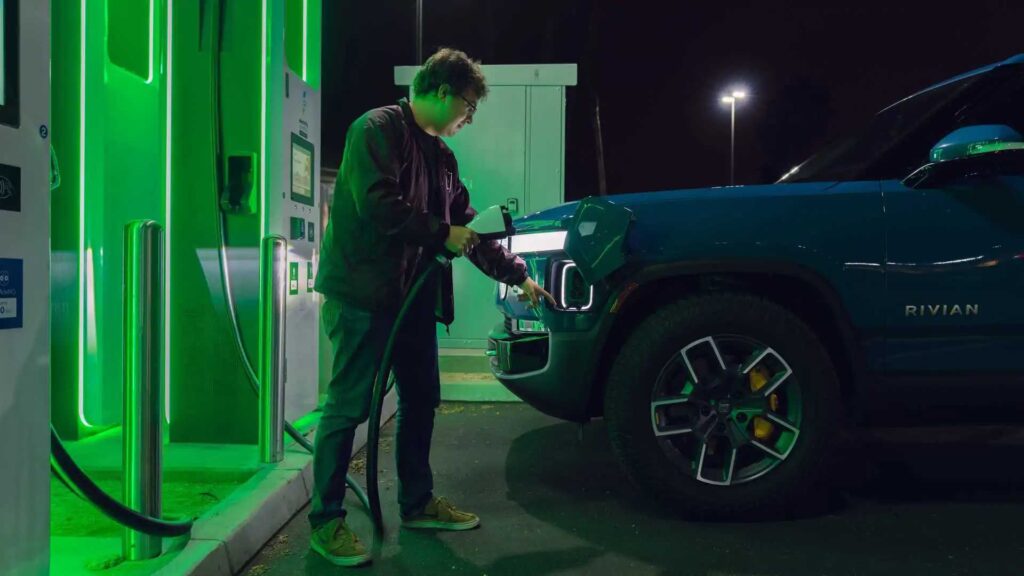- Public EV chargers in the U.S. saw an uptick in reliability in Q1.
- In the first three months, 16% of charging sessions were unsuccessful, according to J.D. Power.
- That’s the best number from the last four years.
For the first time in four years, public electric vehicle chargers in the United States have seen an uptick in reliability.
According to an analysis from J.D. Power first cited in Automotive News, 84% of the public charging attempts in the United States were successful in the first quarter of this year. In other words, 16% of attempts have been unsuccessful, which represents a notable improvement over the numbers from the last four years.
GMC Hummer EV charging at an EVgo fast charger
Photo by: General Motors
Since 2021, the failure rate has hovered around 20% yearly. In 2024, for instance, J.D. Power reported that one in five drivers (20%) were unable to charge at a public dispenser, up from 18% in 2023. So the beginning of this year looks bright, despite charging companies having to deal with the huge elephant in the room. In February, the Trump administration kneecapped the National Electric Vehicle Infrastructure (NEVI) program that had put aside $5 billion to help states build more DC fast chargers along highways.
States are fighting back in court, hoping they’ll be able to unlock federal funding, but a lot of damage has been done already.
As a result, charging operators have shifted their attention to improving the chargers that are already installed. And the reason is simple: money. Two years ago, EVgo, one of the largest EV charging companies in the U.S., reported a usage rate of 9%. Now, that number is at 24%, thanks to the growing number of electric vehicles on the road.
“If a charger is down, it’s costing you money,” said Loren McDonald, chief analyst at EV charging data analytics company Paren, in Automotive News. “The companies that are getting into this space are getting better,” he added. “A lot of the industry started to focus much more on improving and updating and replacing and fixing existing stations that had issues.”
The problems are the same as before, including faulty hardware or components, vehicle-to-charger compatibility issues, and charger-specific issues. The difference now is that operators are kicking things into overdrive to fix the available infrastructure, with a survey of 300 charging companies from Driivz showing that a third of operators are planning to improve their networks this year.
In 2024, Electrify America had 50% more charging sessions compared to the year prior. That’s partly due to the company growing its footprint with more stations added periodically, and partly due to implementing idle fees to reduce congestion and wait times.
“When you look at what’s driving those failure events, it’s always been [that] the charger was out of service or it was malfunctioning,” said Brent Gruber, executive director of the electric vehicle practice at J.D. Power. “It’s still the number one reason for failure, but it’s gotten better.”
